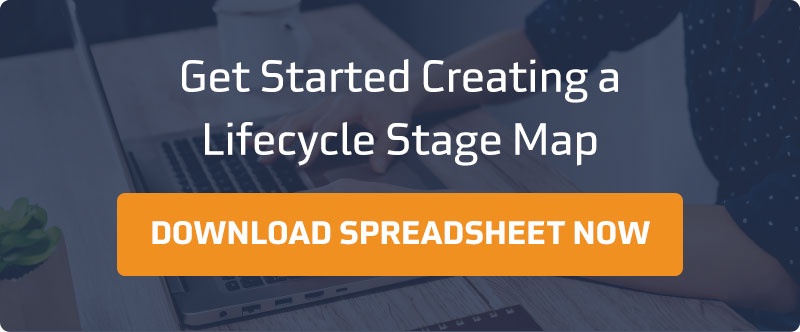Top 4 Questions About Email Sequences in HubSpot Sales Hub
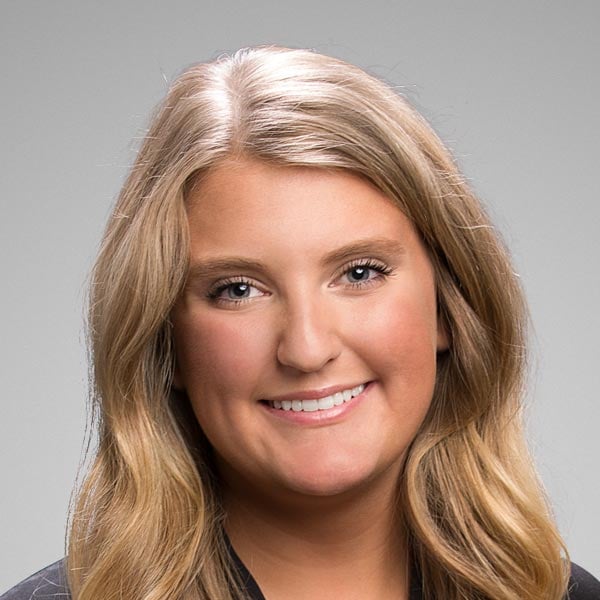 Taylor
|
Taylor
|
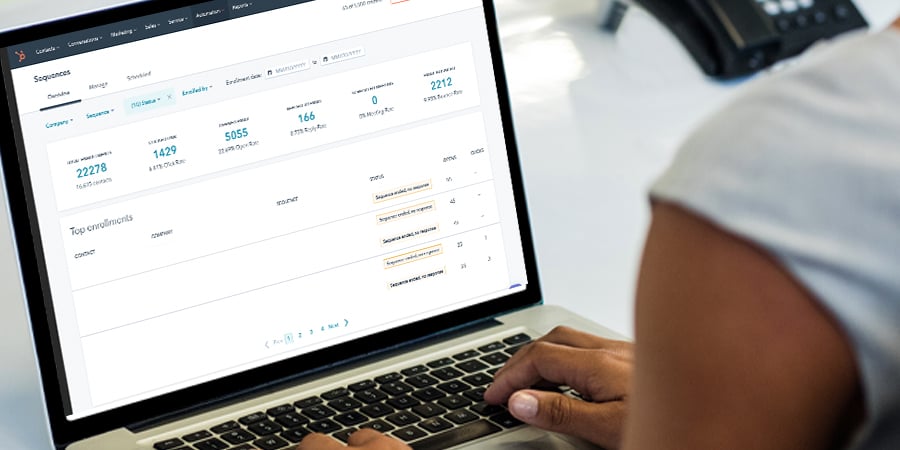
The answers will help you understand how powerful sales automation can be for your sales team.
Did you know that, on average, nearly two-thirds (64.8%) of reps' time is spent in non-revenue-generating activities? This leaves only 35.2% for functions related to selling. That means a good portion of the workday is getting wasted on things your sales team could and should be automating.
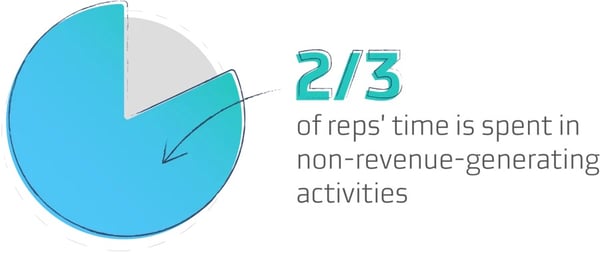
So, how can sales professionals achieve the volume of outreach needed and build relationships that will ultimately turn into sales when most of their time is wasted on non-essential tasks?
One of the best solutions is automation. Developing a sales funnel email sequence in the HubSpot Sales Hub can help give back time in your sales team's day.
HubSpot Sales email sequences tools allow you to:
|
Create targeted, customizable templates in an outreach sales email sequence |
|
|
Schedule email sends for a consistent, natural pace |
|
|
Create tasks to keep your follow-up on point |
|
|
Automatically unenroll contacts when they book a meeting or email you back |
In this post, we’ll cover the top four questions we get asked when working with sales teams to improve their sales automation through sales email templates and sales funnel email sequences.
1. When should I use an email sequence instead of marketing emails?
HubSpot marketing emails are messages sent to specific contact segments based on their behavior and actions. Marketing emails are primarily used to generate leads and get prospects into a sales funnel.
Types of marketing email messages:
- Weekly newsletters
- Product updates
- Promotional sales
- Special offers
- Blog notifications
Salespeople leverage sales sequences to enroll prospects into a highly personalized series of email messages to assist prospecting efforts. Sales email sequences use a combination of personalized emails and follow-up reminders to help keep track of communication with prospects based on where they are at in the buyer's journey. A sales email sequence tends to be more contextual and targeted toward an individual's needs and challenges than a marketing workflow.
Types of sales funnel email sequence messages:
- Content offers
- High-value resources
- Invitations to webinars
- Demo or consultation requests
- Exclusive promotions
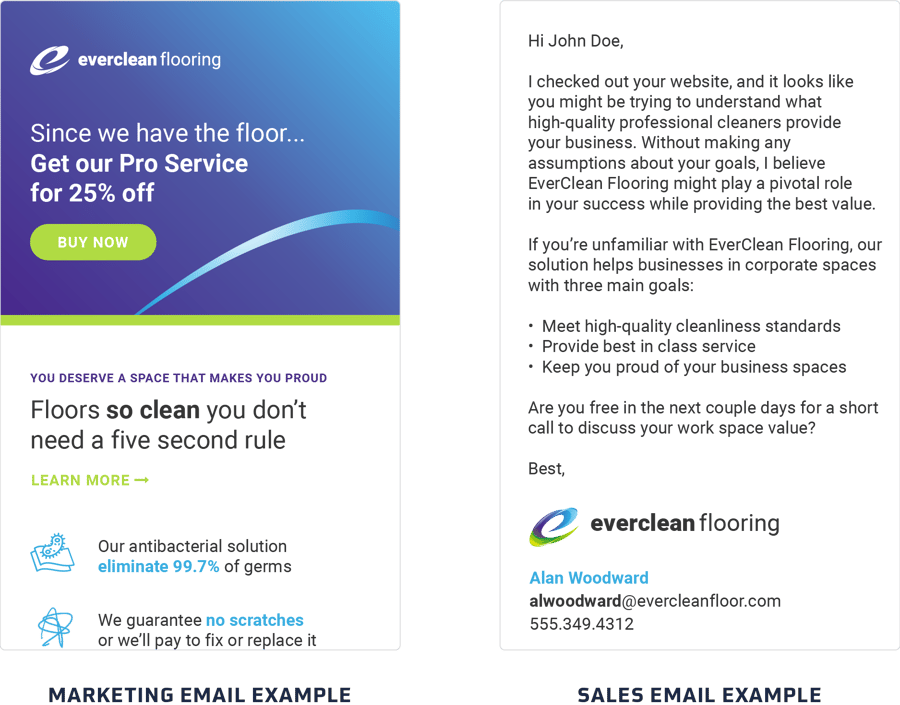
Driving prospects through the customer lifecycle with relevant content at the right moment in time is powerful. Sequenced emails have open rates 80% higher than single emails. Companies that adopt and excel at drip marketing generate 80% more sales at 33% lower costs.
Here are some common use cases and notes on whether a marketing email or an email sequence is better for the task.
|
Use Case |
Email Marketing |
Sales Sequence |
|
I want to re-target prospects from a recent trade show or expo |
||
|
I want to run an end of season sale campaign |
||
|
I want to follow up with leads who are sales qualified |
||
|
I want to send out a newsletter |
||
|
I want to send a series of emails around a specific and timely event |
||
|
I want to run a campaign to target cold prospects |
||
|
I want to run an upsell or a cross-sell campaign |
||
|
I want to send out product updates |
||
|
I want to run an end of season sale campaign |
|
Summary: Marketing emails are stylized, image-rich, designed emails often sent when a salesperson hasn’t been assigned the contact and are primarily used to promote your products or services and nurture prospects into leads. Sales funnel email sequences are a better fit once a one-to-one relationship has been established or the content is highly targeted. |
2. How does an email sequence get sent? Do I need to make more email lists?
No, you don't need to create email lists to send sales email sequences. That being said, the answer to how sales sequences get sent has a couple of different options from which you can choose.
Up until recently, HubSpot Sales Hub only allowed salespeople to enroll customers into sequences manually. This ability still exists, and there are excellent arguments for why manually enrolling specific contacts can be beneficial in some cases. For example:
- You get a second checkpoint to make sure someone is really qualified for the sales material you're about to send them.
- You can take a sales email template and personalize it for each contact to ensure the right people receive the right information at the right time.
Going the manual entry route with sales sequences, you then have two options for how you actually add the contacts into the sequences. Again, the reason for each probably primarily depends on what you're trying to accomplish. You can either add contacts within the "Sequences" tab in the HubSpot Sales Hub if you're looking to bulk enroll contacts into a sequence, or you can enroll the leads that you want via the "Contacts" tab in HubSpot. The latter is best if you're going to personalize before you send the emails out.
Enrolling Via Contacts Tab
In your HubSpot portal, hover over the "Contacts" tab in the navigation bar and click the dropdown option "Contacts." From here, select the contacts you wish to enroll in a sales sequence. Click the "More" tab and select "Enroll in sequence," then choose the sequence you would like to use.

One of the best pro tips when enrolling contacts via this tab is creating "views" inside your contact lists. HubSpot views allow you to set specific filters that automatically pull in contacts based on the criteria. For example, your sales team could benefit from a view that filters contacts based on the lifecycle stage SQL, who the contact is assigned to, and what their industry is. From there, you have an easy way for your salespeople to work a list of contacts who are in the right stage and ready for nurturing.
Enrolling Via Sequences Tab
Once you're in your HubSpot portal, hover over the "Automation" tab in your navigation bar and click "Sequences." When you click on the sequence you want to enroll contacts in, you'll be directed to the sequence summary page. In the upper right-hand corner of this summary page, click "Enroll," then "Enroll Multiple Contacts." From here, select the checkbox next to the contacts you wish to enroll in the sequence. After you've selected the list of contacts, click "Next."
As we mentioned before, this used to be the only way to enroll contacts into sales sequences. However, HubSpot has now come out with the ability to automate sequence enrollment and enrollment using workflows. It's important to note this feature is specifically available to Sales Hub Enterprise and Service Hub Enterprise users.
This automation is powerful because it gives sales teams the ability to send specific follow-up emails after leads take a specific action, ensuring no one falls through the cracks if they're qualified and ready for sales nurturing. However, before adding this to your current workflows, consider the use case for this automation.
Here are some examples of when and when not to use automating sequence enrollments.
|
Good Uses of Automating |
Not Good Uses of Automating Enrollment |
|
Enrolling a contact in a sequence from a sales qualified form submission to schedule a meeting |
Enrolling a list of recently imported cold leads in a sequence to see which leads are active |
|
Enrolling a contact in a sequence as a hand-off from sales once a deal has closed |
Enrolling any list of 100 or more contacts into a sequence using a workflow |
|
Enrolling a contact into a sequence as a response to a meeting outcome of no show |
Enrolling contacts into sequences using non-personalized criteria such as “Create date is today” |
|
Summary: You do not need to create email lists to send sales templates out. The best way is to create a HubSpot view in your contact lists that your salespeople can continuously work from and easily enroll contacts from this view. |
3. Can you make follow up emails for other salespeople? Does each salesperson need a separate sales funnel email sequence?
Generally, the answer to this question is no. Each salesperson does not need their own sales follow up email template. You can create a sales sequence structure inside HubSpot Sales Hub that all your sales representatives can use.
This allows you to create helpful and relevant follow up sales email templates that are easy for your team to jump and start sending. And because you have the option to personalize the emails in the sales sequences before you hit send, you can be assured that your communications won't come across as templated and disingenuous.
We don't recommend each salesperson having a separate email funnel sequence for themselves unless they're trying to accomplish something unique or specific. Keeping one version of the sales sequence templates in a centralized place makes it easy for anyone to find or update. It would be a nightmare to have to track down seven different email templates for one product update.
Another question we get asked often is, "Can I enroll contacts for another salesperson?" The answer is no. The sales follow up emails are connected to your specific inbox, which means the emails come from whoever enrolls them into the sequence.
|
Summary: No, each salesperson doesn’t need their own template. Instead, create a series of sales follow up email templates that your team can find, use, and update. |
4. What types of emails should a sales email sequence include?
It's challenging to give a concise answer to this type of question because the answer is dependent upon what you're trying to accomplish. You should ultimately include whatever sales email templates you think you need to help give your leads the nurturing and communication they require.
That being said, there are a couple of best practices we like to follow when creating sales funnel email sequences. As a general rule of thumb, we like to see sequences and sales automation have the following types of emails in them.
- An opening email. Use this email to grab attention. Layout why you're reaching out, explain what's in for them, and how you understand their challenges, then establish yourself as a trustworthy guide to helping them find a solution to their problem.
- An offer or resource email. Give your prospects high-value resources or offers tailored to their specific needs or problems. This helps build trust between you and your prospect. They'll see you not only understand their situation but that you're an expert in the solutions you provide. You might have one or two value offers in your sales email sequences depending on how you need to nurture your leads.
- A specific ask for them to take action or buy. It's important to ask people to take a specific action. After all, you're trying to turn these prospects into customers. You need to be clear and direct but avoid being pushy. These often include consultation sign-ups, webinar invitations, or demo requests.
- A last chance or break-up email. Give your prospects one last chance to not miss out on the solution you're offering. Some emails just get overlooked — and you'd be amazed what simple a reminder can accomplish. Let prospects know that you're offering one last chance, but if they're not ready to buy, you'll be available when the time is right.
|
Summary: An example of a sales sequence with four emails: 1) A welcome email to explain why you’re reaching out, 2) A valuable offer or resource to build trust and rapport, 3) An ask for a specific action, and 4) a last chance/break-up. |
Expert tip: Set personalization information for all emails at the beginning of the sequence, not before each send.
One of the exclusive benefits of using sales automation is efficiency. With sales sequence automation, you're giving time back to your salespeople, allowing them to focus on the parts of selling that are high-effort, high-impact.
With that in mind, make sure time is taken to customize all the emails in the sales sequence before you enroll a contact. Meaning, enroll the contact, then personalize the email sequence — and go on your merry way. You won't have to remember to come back in 3 days to customize your messages. That's productivity and efficiency at its best.
Help your sales team work more efficiently with sales sequences in the HubSpot Sales Hub.
Make your sales process quicker and more efficient than ever before with the sales funnel email sequences. They're easy to set up, and once you've done it, HubSpot will keep you on track with reminders.
Hopefully, by answering these four sales email sequence questions, you now understand how powerful sales automation can be for your sales team.
If you have any questions on how to set up a sales sequence for your team or if you'd like someone to review the sequence you're currently using, we're happy to help. Just set up a review meeting with our team.
Subscribe to Our Blog
Stay up to date with the latest marketing, sales, and service tips.


